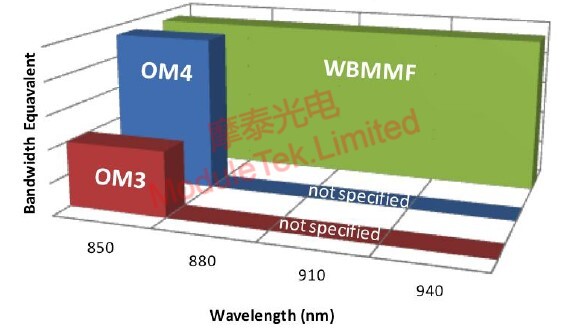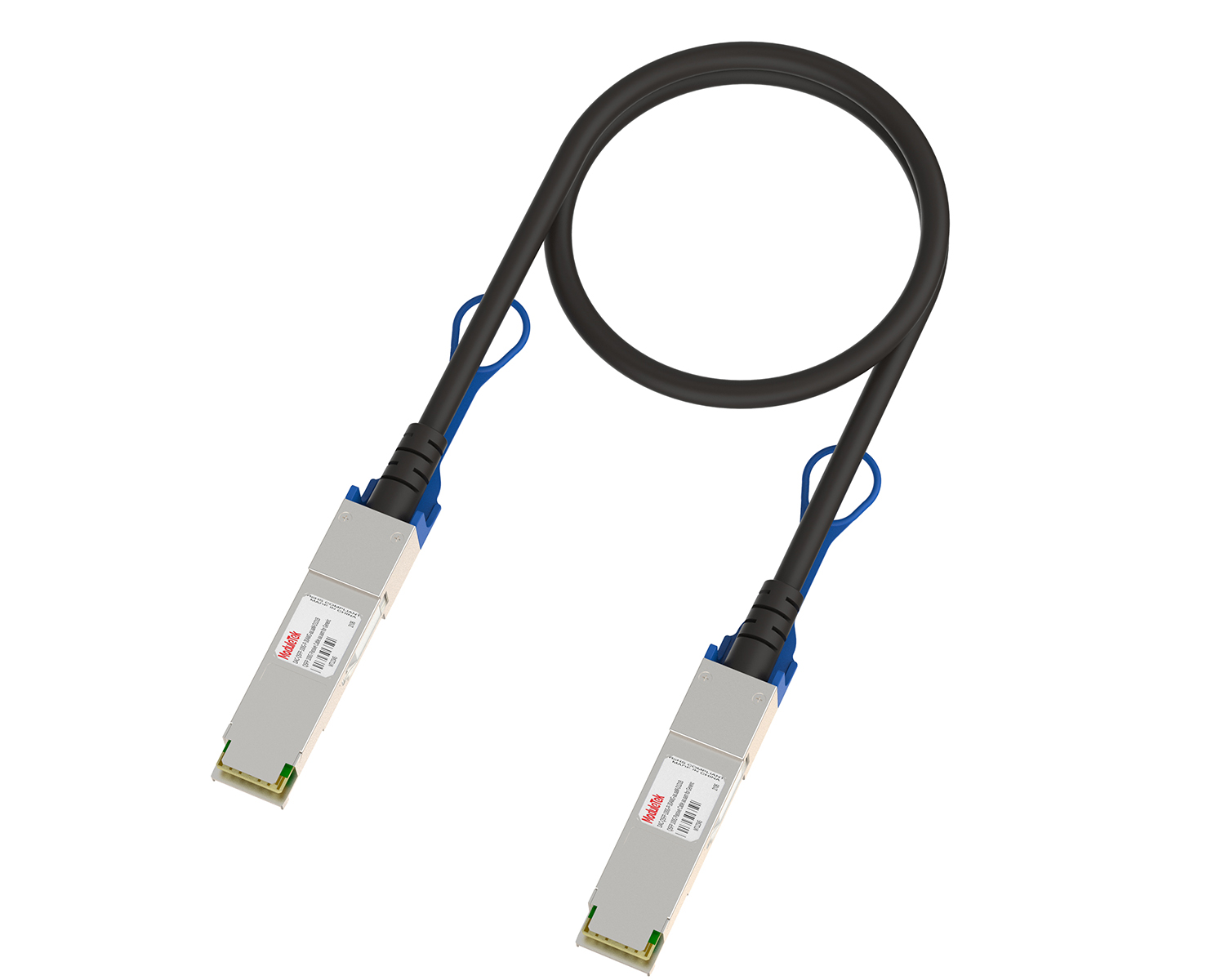What is broadband Multimode Fiber WBMMF
Time: 2021-11-09WBMMF (Wideband Multimode Fiber) Wideband Multimode Fiber, also known as OM5 fiber, is a new type of multimode fiber with high effective mode bandwidth EMB and wide wavelength range. The effective mode bandwidth of traditional OM3 and OM4 multimode fibers is 2000MHzKm and 4700MHzKm respectively, but the wavelength range is narrow, only working near 850nm, limiting its WDM capability, unable to meet the demand for higher wavelengths, higher bandwidths and longer distances. The figure below shows the comparative relationship between bandwidth and wavelength of the three fibers OM3, OM4 and WBMMF, we can see that both OM3 and OM4 can only achieve better mode bandwidth in the 850nm wavelength range, while the WBMMF fiber further optimizes the wavelength coverage under the premise of enhancing the mode bandwidth, and can fully support all the wavelengths from 846-953nm.

Figure 1 Comparison of OM3, OM4 and WBMMF optical fibers
The Telecommunications Industry Association (TIA) of the United States established a working group in October 2014 to provide guidance for the development of the WBMMF 50/125um standard, which is designed to support shortwave wavelength-division multiplexing SWDM transmission. In other words, WBMMF was created for SWDM applications. SWDM (Shortwave-WDM, Shortwave Wavelength Division Multiplexing) draws on the WDM (Wavelength Division Multiplexing) technology of single-mode optical fiber, expands the 850nm wavelength of traditional multimode fiber applications to the 850nm-950nm wavelength range, and transmits data at four wavelengths of 850nm, 880nm, 910nm, and 940nm on a single multimode optical fiber, which can greatly enhance the transmission capacity and increase the transmission distance of multimode optical fiber. This can greatly increase the transmission capacity of multimode fiber and increase the transmission distance.
The working principle of SWDM is as follows, four VCSELs at the transmitting end generate four different wavelengths of optical signals, which are multiplexed to a single link through MUX, and the signals are demultiplexed at the receiving end, and output as parallel optical signals through DEMUX, which are detected by the four detectors and converted into electrical signals.

Figure 2 Schematic diagram of SWDM operation
The effective mode bandwidth and wavelength characteristics of WBMMF perfectly meet the demand for higher bandwidth and longer distance of SWDM. As the choice of future data centers, Wideband Multimode Fiber (WBMMF) far exceeds the traditional OM4 multimode fiber in terms of fiber effective mode bandwidth, which also means that it can provide more margin for the possible future emergence of higher-speed Ethernet, especially in the 40G-400G data transmission can be achieved with higher integration and more economical applications.
Moduletek Limited is at your service.
If you have any questions about the above content, you can contact us by Email : web@moduletek.com

 40G/100G Optical Transceivers
40G/100G Optical Transceivers 10G/25G Optical Transceivers
10G/25G Optical Transceivers 155M/622M/2.5G Optical Transceivers
155M/622M/2.5G Optical Transceivers 100M/1G Optical Transceivers
100M/1G Optical Transceivers FC 16G/32G Optical Transceivers
FC 16G/32G Optical Transceivers CWDM/DWDM Optical Transceivers
CWDM/DWDM Optical Transceivers 100M/1G/10G Coppers
100M/1G/10G Coppers Active Cable AOC
Active Cable AOC Direct Attach Cable DAC
Direct Attach Cable DAC Regular/MTP-MPO Fiber Patch Cords
Regular/MTP-MPO Fiber Patch Cords MT2011
MT2011 MT2010
MT2010 CodingBox
CodingBox






